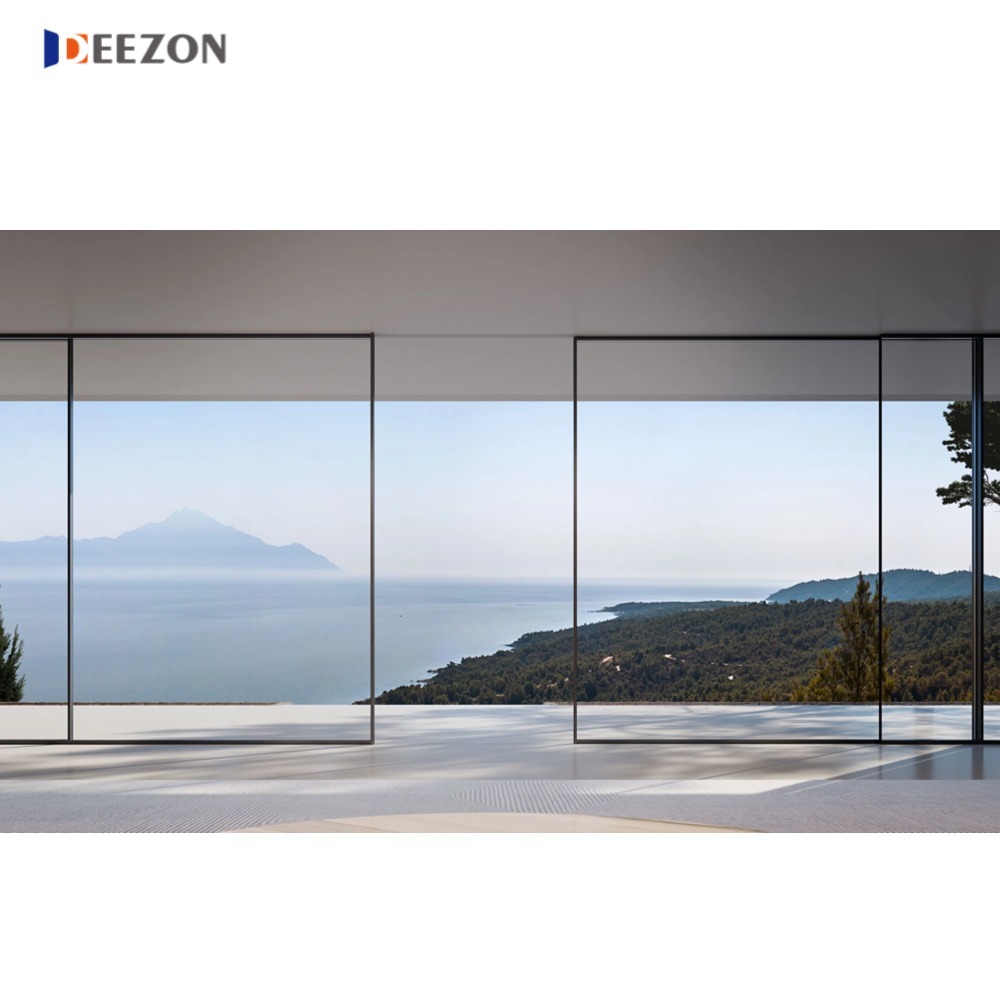Foshan Deezon Windows and Doors Co.,Ltd.
The Ultimate Guide to Installing Pergola Kit Brackets Like a Pro
Jul 11,2025

The Ultimate Guide to Installing Pergola Kit Brackets Like a Pro
If you're looking to enhance your outdoor space, installing a pergola is a fantastic choice. Not only does it provide shade and shelter, but it also adds a stylish touch to your backyard. However, the success of your pergola installation largely depends on the quality of your bracket setup. In this guide, we will outline everything you need to know about installing pergola kit brackets like a pro, ensuring a sturdy and aesthetically pleasing structure.
Table of Contents
- Understanding Pergola Brackets: An Overview
- Choosing the Right Brackets for Your Pergola
- Essential Tools and Materials Needed for Installation
- Preparing Your Backyard for Pergola Installation
- Step-by-Step Installation Guide for Pergola Kit Brackets
- Common Mistakes to Avoid During Installation
- Maintenance Tips for Your Pergola
- Frequently Asked Questions
Understanding Pergola Brackets: An Overview
Pergola brackets are critical components that ensure the stability and longevity of your pergola. They serve to connect the posts to the beams and rafters, providing a secure framework. Different types of brackets are available, and understanding their purpose is essential when planning your installation.
The Role of Brackets in Pergola Stability
Brackets play a vital role in distributing weight evenly across your pergola structure. They prevent sagging and shifting, which can lead to structural failure over time. By using high-quality brackets, you can significantly enhance the durability and safety of your outdoor structure.
Types of Pergola Brackets
There are several types of brackets available for pergola installations, including:
- Corner Brackets: These are used at the corners of the pergola to connect beams and posts.
- Post Brackets: Designed to secure posts directly to the ground or a concrete base.
- Beam Brackets: Used to attach horizontal beams to vertical posts.
- Rafter Brackets: Connect rafters to beams, providing additional support.
Choosing the Right Brackets for Your Pergola
Choosing the right brackets for your pergola is essential for a successful installation. Factors to consider include:
Material Selection
Pergola brackets are made from various materials, including steel, aluminum, and plastic. Steel brackets offer superior strength and durability, making them ideal for larger structures. Aluminum brackets are lightweight and resistant to corrosion, while plastic options are best for smaller, temporary installations.
Weight Capacity
Ensure that the brackets you choose can support the weight of your pergola, including any additional features like climbing plants or outdoor lighting. Most manufacturers provide weight capacity specifications, so check these details before making your purchase.
Design and Aesthetics
While functionality is crucial, the design of your brackets can also affect the overall look of your pergola. Choose brackets that complement your pergola's style, whether modern, traditional, or rustic.
Essential Tools and Materials Needed for Installation
Before you begin the installation process, gather the necessary tools and materials. Having everything on hand will make the project smoother and more efficient.
Tools You'll Need
- Drill: A power drill is essential for making holes and driving screws.
- Screwdriver: A reliable screwdriver for securing screws into the brackets.
- Level: Ensures that your pergola is perfectly straight and balanced.
- Measuring Tape: For accurate measurements of posts and beams.
- Safety Gear: Goggles, gloves, and a hard hat for personal protection.
Materials Required
- Pergola Kit: Includes all necessary components for building your pergola.
- Pergola Brackets: Select high-quality brackets based on your design choice.
- Fasteners: Screws and anchors suitable for the materials you are using.
- Concrete Mix: Required for securing posts in the ground.
Preparing Your Backyard for Pergola Installation
Preparation is key to a successful pergola installation. Follow these steps to ensure that your backyard is ready for the project.
Choosing the Right Location
Select a location that receives adequate sunlight while also providing some shade. Avoid areas with overhanging branches or potential hazards, such as power lines.
Clearing the Area
Clear the designated area of any debris, plants, or obstacles. This creates a clean workspace and allows for easy access during installation.
Marking the Layout
Use stakes and string to outline the layout of your pergola. Accurate markings ensure that the structure fits perfectly within your designated space.
Step-by-Step Installation Guide for Pergola Kit Brackets
Now that you have everything prepared, it's time to install your pergola brackets. Follow this detailed step-by-step guide for a professional finish.
Step 1: Setting the Posts
Begin by digging holes for your posts, ensuring they are deep enough to provide stability. Typically, a depth of at least 2 feet is advisable for most pergolas. Place the posts in the holes and use a level to ensure they are vertical. Pour concrete mix around the base of the posts, allowing it to cure as per the manufacturer's instructions.
Step 2: Attaching Corner Brackets
Once the posts are set and the concrete has cured, it's time to attach the corner brackets. Position each corner bracket at each intersection of the posts and beams, ensuring they are level. Secure them with screws, using your drill.
Step 3: Installing Beam Brackets
Next, install the beam brackets to connect the horizontal beams to the vertical posts. Again, ensure everything is level before securing the brackets with screws.
Step 4: Attaching Rafter Brackets
With the beams in place, it’s time to attach the rafter brackets. Position these brackets on top of the beams, ensuring they are evenly spaced for aesthetic appeal and structural integrity. Secure them with screws.
Step 5: Final Inspection
Once all brackets are installed, conduct a thorough inspection of the entire structure. Check for levelness, stability, and secure fittings. If everything looks good, your pergola is ready for the finishing touches!
Common Mistakes to Avoid During Installation
To ensure your pergola stands the test of time, avoid these common mistakes:
Neglecting Measurements
Accurate measurements are crucial. Double-check all dimensions before cutting materials or installing brackets.
Ignoring Local Regulations
Check any local building codes or regulations to ensure your pergola complies with safety standards.
Rushing the Process
Take your time during installation. Rushing can lead to mistakes and a less stable structure.
Maintenance Tips for Your Pergola
Once your pergola is installed, maintaining it is essential for longevity. Here are some tips:
Regular Inspections
Inspect your pergola regularly for any signs of wear or damage. Look for loose screws, rotting wood, or rusting metal components.
Cleaning
Keep your pergola clean by removing leaves, debris, and dirt. A gentle wash with soap and water can maintain its appearance and prevent degradation.
Protective Treatments
If your pergola is made of wood, consider applying a protective sealant or stain to protect against weather damage.
Frequently Asked Questions
1. How long does it take to install a pergola?
The installation time can vary based on the size of the pergola and your experience level. Typically, it can take anywhere from a few hours to a couple of days.
2. Do I need a permit to build a pergola?
It depends on your local regulations. Always check with your local building authority to determine if a permit is required.
3. What type of wood is best for building a pergola?
Cedar, redwood, and pressure-treated lumber are popular choices due to their durability and resistance to decay.
4. Can I install a pergola on my own?
Yes, many homeowners successfully install pergolas themselves. However, having an extra set of hands can be beneficial for larger structures.
5. What is the average cost of a pergola kit?
The cost can vary widely based on materials, size, and design, but expect to pay anywhere from $500 to $3,000 for a quality kit.
Conclusion
Installing pergola kit brackets may seem daunting, but with the right tools, preparation, and knowledge, it can be a rewarding DIY project. By following this comprehensive guide, you can create a stunning pergola that will enhance your outdoor space for years to come. Remember to maintain your structure and avoid common mistakes to ensure its longevity and stability. Happy building!







